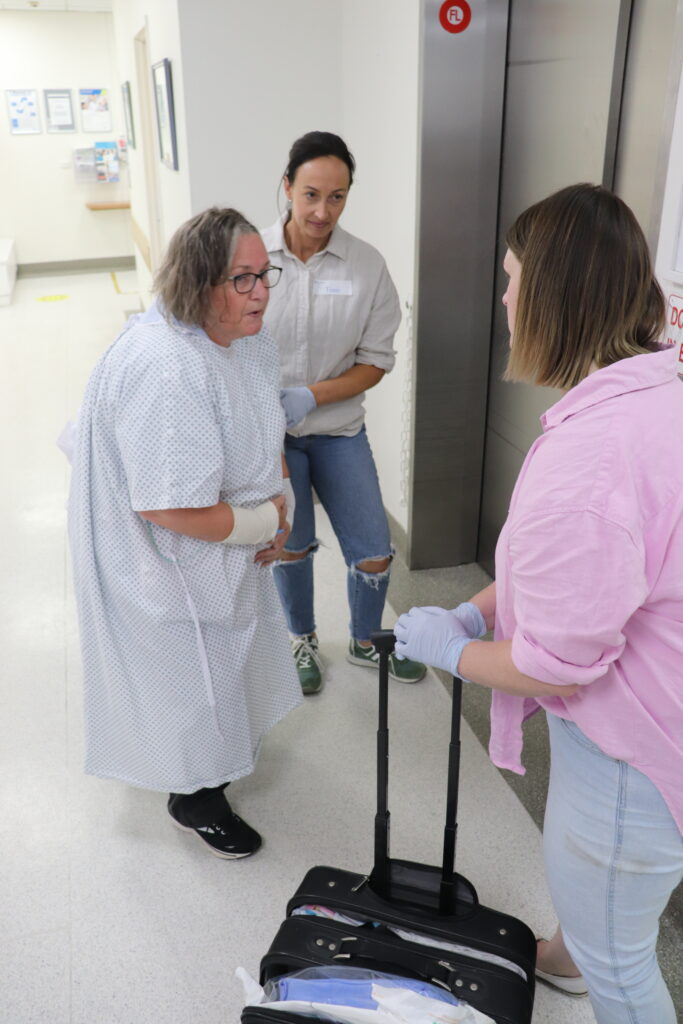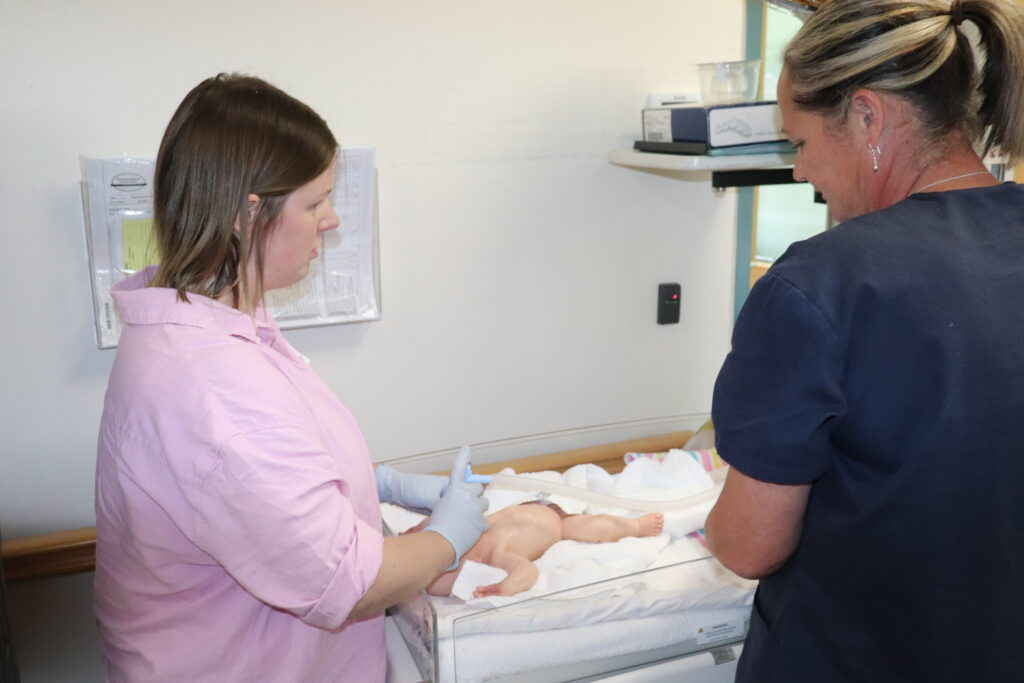It wasn’t real, but a live drill to prepare BRHS Maternity and other medical staff for a mother giving birth inside the hospital’s lift had all the intensity of the real thing.
The exercise, held last week, tested BRHS staff and procedures for something that, as far as staff could remember, has never happened before – a woman giving birth in the elevator on her way to the BRHS Maternity Unit on the first floor of the hospital’s Day Street campus.
In the drill, Nurse Educator Robyn Adams played a mother who had a baby in the lift who needed resuscitation as she suffered a post-partum haemorrhage – major bleeding immediately after birth.
It was all systems go with the first Medical Emergency Team (MET) call over the hospital’s PA system to attend to Robyn, who was distressed and in an advanced stage of labour outside the lift.
Maternity staff and others swooped. One team cared for Robyn during the delivery in the lift. Once born, another team rushed the baby to a resuscitation unit known as a Resuscitaire for life-saving treatment. The Resuscitaire unit was donated to the Maternity Unit last year by the Newborn Intensive Care Foundation.
Meanwhile, a medical team gathered around Robyn’s bed in a labour ward as they worked to identify the cause of Robyn’s bleeding and stem it.
BRHS Maternity Unit Manager Laura Griffiths, who monitored the exercise, said the exercise was part of the PRactical Obstetric Multi-Professional Training (PROMPT) series of drills completed by health services across Victoria every year. She said the drills are deliberately intense and realistic.
“The idea behind the training is that all of the teams throughout the hospital who might potentially be involved in a birth, train together so that we get to know each other, know how each team works, understand each other’s role in a situation and make it as true-to-life as possible,” Laura said. “Robyn had her scenario to act out, and she did a magnificent job. She read her brief and acted it out 100 per cent.”
Laura said systems and processes were well tested during the exercise. Different scenarios and staff take part in similar drills between four and six times a year. “Mum and baby were both well and healthy after their emergencies and were able to be cared for in Bairnsdale if that was a real scenario,” she said.
“It’s always a high-paced environment in an emergency, and the labour ward can get quite cluttered with all the people and equipment, so it’s good to get used to all the equipment that might be used in an emergency.
“It was a great success. Robyn, our actress, gave feedback that she felt well supported, well informed throughout the scenario. She said the nurses and midwives were reassuring her and letting her know what was happening to her and her baby. That part is just as important as the clinical part of the scenario.”







